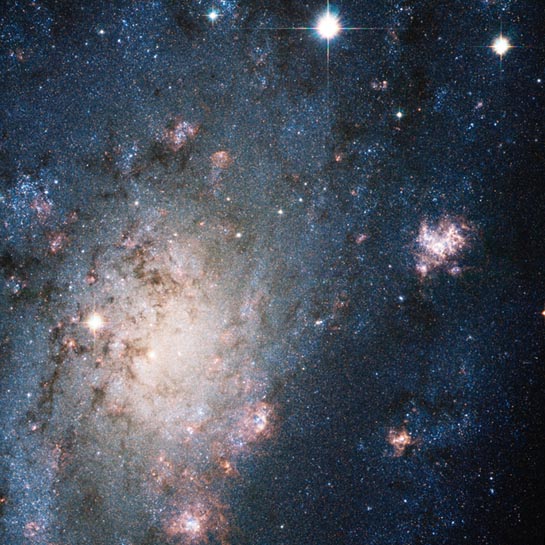
NGC 2403
Spiral Galaxy, Supernova
RA 7h 36m 58.45s Dec 65° 36' 8.43"
Camelopardalis
12 million light years
8.9
21.9 × 12.3 arcmin
3.23 x 3.30 arcminutes
North is 140.0° right of vertical
NASA, ESA, A.V. Filippenko (U of California, Berkeley), P. Challis (Harvard-Smithsonian Center for Astrophysics), et al.
September 2, 2004
ABOUT THIS IMAGE:
The explosion of a massive star (in the top right corner) blazes with the light of 200 million Suns in this NASA/ESA Hubble Space Telescope image. The supernova is so bright in this image that it easily could be mistaken for a foreground star in our Milky Way Galaxy. And yet, this supernova, called SN 2004dj, resides far beyond our galaxy. Its home is in the outskirts of NGC 2403, a galaxy located 11 million light-years from Earth. Although the supernova is far from Earth, it is the closest stellar explosion discovered in more than a decade. (ID: opo0423a)
Also pictured here is NGC 2404, the small bright region at the right of center.
From Wikipedia:
NGC
2403 (also known as Caldwell 7) is an intermediate spiral galaxy in the
constellation Camelopardalis. NGC 2403 is an outlying member of the M81
Group, and is approximately 8 million light-years distant. It bears a
striking similarity to M33, being about 50,000 light years in diameter
and containing numerous star-forming H II regions. The northern spiral
arm connects it to the star forming region NGC 2404. NGC 2403 can be observed
using 10×50 binoculars.
The galaxy was discovered by William Herschel in 1788. Allan Sandage detected
Cepheid variables in NGC 2403 using the Hale telescope, giving it the
distinction of being the first galaxy beyond the Local Group within which
a Cepheid was discovered. He derived a distance of a mere 8 thousand light
years. Today, it is thought to be a thousand times further away at about
8 million light years (2.5 Mpc).